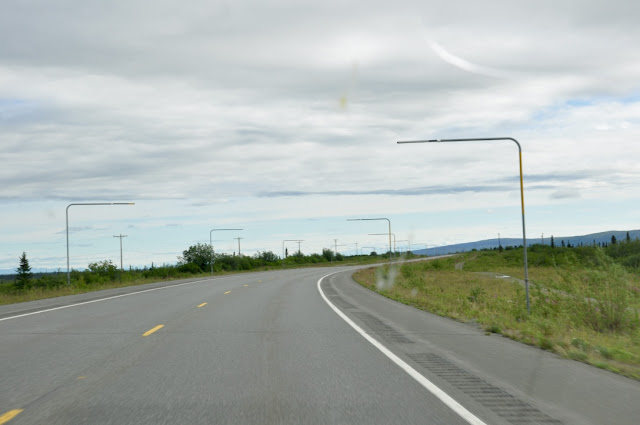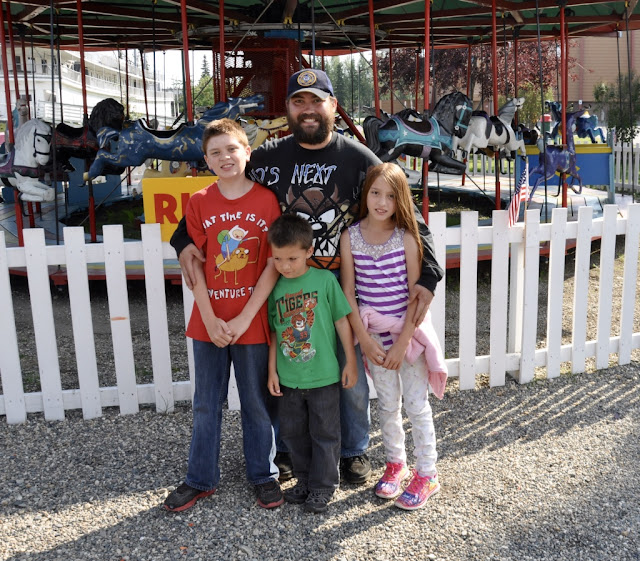This is a reconstruction of a cache, used to store food, furs, and other valuables out of the reach of animals.
We took a short side trip to Fort Greely, just outside Delta Junction, to see what was there. When we asked the gate guard, he answered, "Lots of dirt and mooses." This is a US Army launch site for anti-ballistic missiles and is the home of the Cold Regions Test Center, as it is one of the coldest regions in Alaska. How cold, you ask? Cold enough that you have to put a jacket on your propane tank:
The gate guard was right! We finally did see a moose, who didn't care at all that she was in a restricted area but did seem a little concerned with us. Glad there was a fence.
Ohhhh-no wonder she's so protective:
John feels right at home, as we leave the base and continue toward Eielson Air Force Base, our home for the next few days.
The Alaska pipeline:
We check into our room then, without even unpacking, hurry to North Pole, AK, to see Mary's brother, Glenn and his family.
We hadn't met Glenn and Gina's grandson, Sebastian, but he's glad to see us!
Glenn and Gina's son, Scott, Scott's wife, Emily, and their Isaac
The Lady of the Lake is a B-29 submerged in a small pond on Eielson Air Force Base. When Mary, her parents, and Matthew and Benjamin visited in 1993, not much was known about her but divers and researchers have since discovered that she was submerged after an accident that made her no longer air-worthy and she was used for water rescue practice. Her role during the cold war was as a weather aircraft and she was the first US aircraft to detect radiation from a nuclear test in Russia at a time when the US believed Russia was not nuclear capable. The day we visited, a team of environmental workers was preparing to drill a test hole to determine if contaminants such as fire retardant were used at this site.
This "Burl"y mosquito was standing in the same spot 23 years ago, perhaps because lots of juicy tourists stop to pose.
Mary, Glenn, and Glenn and Gina's granddaughters Julie and Anna at the University of Alaska Museum of the North.
Otto's counting down the minutes to closing, when he can relax.
Most creative outhouse ever:
We drove to UA-Fairbanks animal farm, but only these 2 reindeer were accepting visitors:
On to Pioneer Park, formerly Alaskaland, a Fairbanks park that was created for the 1967 Alaska Exposition and features the S.S. Nenana, one of the largest wooden sternwheelers ever constructed.
Glenn and Gina-thank you for being such good hosts.
Their daughter Julie with her daughter Anna:
Their son John with his children Romeo, Sebastian, and Julie:
Glenn taking a picture of John taking a picture of Glenn...... Actually, Glenn was taking a video of the 9 of us who were riding the little park train-what fun!
A gold sluice:
Glenn and Gina's daughter Tracy holding Makai and her husband Jon with Jayden. We didn't get to see Tracy's Cyris, as he was with his dad.
And, due to a mixup of phone numbers and then her work schedule, we missed seeing Gina and Glenn's youngest, Kayra, and her family. Darn!



























































